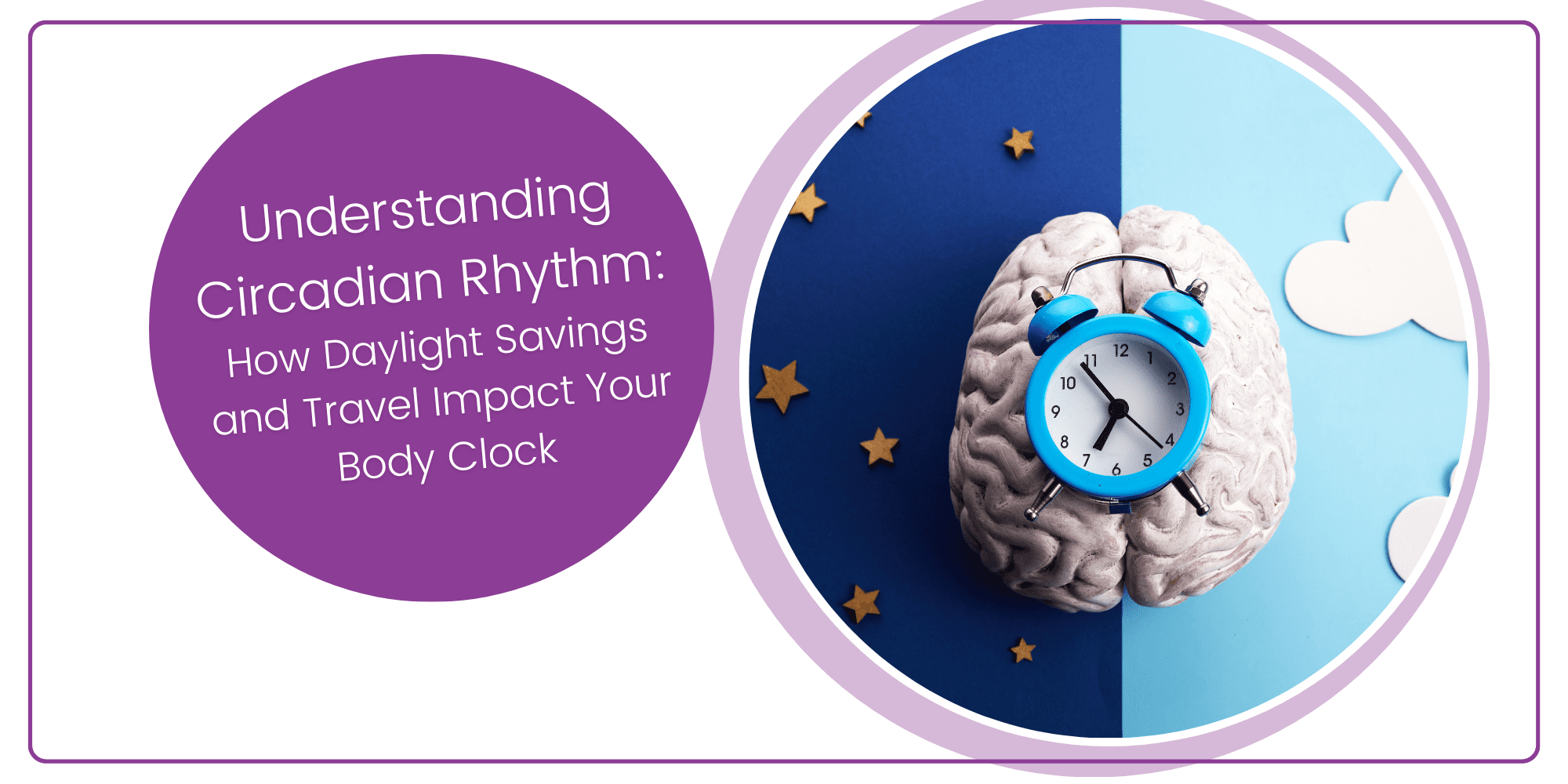
The human body operates on an intricate internal clock known as the circadian rhythm. This rhythmic cycle regulates various physiological processes, including sleep-wake patterns, hormone production, body temperature, and metabolism. Understanding the mechanisms behind the circadian rhythm is crucial for comprehending how external factors, such as daylight savings and travel, can disrupt this delicate balance.
What is Circadian Rhythm?
The term “circadian” comes from the Latin words “circa,” meaning “around,” and “diem,” meaning “day.” This aptly describes the approximately 24-hour cycle that governs our biological functions. While the circadian rhythm is partly influenced by external cues, such as light and darkness, it is primarily driven by an internal biological clock located in the brain’s suprachiasmatic nucleus (SCN).
How Does Circadian Rhythm Work?
The SCN receives input from the eyes, particularly the retina, which detects changes in light. When exposed to light, especially sunlight, the SCN signals the brain to promote wakefulness and alertness by suppressing the release of the hormone melatonin, which induces sleep. Conversely, in the absence of light, such as during nighttime, melatonin production increases, signaling the body to prepare for sleep.
Impact of Daylight Savings Time:
Daylight Savings Time (DST) is a practice of advancing clocks during the warmer months to extend evening daylight and conserve energy. While the intention behind DST is to make better use of daylight, the shift in time can disrupt the circadian rhythm, leading to various health effects.
When clocks are set forward in the spring, individuals may experience sleep disturbances as their bodies struggle to adjust to the new schedule. This disruption can result in symptoms akin to jet lag, including fatigue, irritability, and difficulty concentrating. Research suggests that the effects of springing forward may persist for several days as the body gradually adapts to the new time.
Conversely, when clocks are set back in the fall, the extra hour of sleep may initially seem beneficial. However, even this minor change can disrupt the circadian rhythm, causing feelings of grogginess and lethargy as the body adjusts to the new schedule.
Travel and Jet Lag:
Traveling across time zones can profoundly affect the circadian rhythm, leading to jet lag—a temporary sleep disorder characterized by fatigue, insomnia, and other symptoms. Jet lag occurs because the body’s internal clock remains synchronized with the individual’s original time zone, causing a mismatch between the internal rhythm and the external environment.
The severity of jet lag depends on factors such as the number of time zones crossed, the direction of travel, and individual differences in circadian rhythm flexibility. Eastward travel, which involves losing time, typically results in more severe jet lag than westward travel.
Strategies to Minimize Circadian Disruptions:
While it may be challenging to completely avoid disruptions to the circadian rhythm, there are strategies to help mitigate their effects:
- Adjust Gradually: Before traveling to a new time zone or during the transition to daylight savings time, gradually adjust your sleep schedule by shifting bedtime and wake time by 15–30 minutes each day leading up to the change.
- Embrace the Sunlight: Upon arrival at your destination or during daylight savings transitions, exposure to natural light can help reset your internal clock. Spending time outdoors during daylight hours can help synchronize your circadian rhythm with the new time zone. Dichro green light therapy can also be helpful.
- Stay Hydrated and Maintain a Healthy Lifestyle: Proper hydration, regular exercise, and a balanced diet can support overall health and resilience to circadian disruptions. To ensure maximum health and resilience, consider LRA testing to remove any hidden immune burdens so your body can defend and repair as it should.
- Create a relaxing environment to allow your body to transition easily into sleep. Keep your bedroom dark, quiet, and cool; use comfortable bedding; and limit exposure to screens before bedtime. Establish a relaxing pre-sleep routine, such as taking a salt and soda bath, reading, or practicing abdominal breathing or relaxation techniques to signal the body that it’s time to wind down.
- Develop a Consistent Sleep Routine. Going to bed and waking up at the same time every day, even on weekends, helps regulate the body’s internal clock. This consistency supports better sleep quality and overall well-being.
Cortisol levels are closely intertwined with sleep and circadian rhythm. Based on normal physiology, lower levels of cortisol are present during the initial phase of sleep when melatonin is the highest, and they increase throughout the sleep period to peak just minutes before the individual awakens. In other words, cortisol rhythm sets the internal biological clock! You can test your cortisol levels using this simple saliva test. Watch our latest video on Adrenal Hormones and Circadian Rhythm.
Conclusion:
The circadian rhythm plays a crucial role in regulating our daily biological processes, from sleep patterns to hormone levels. External factors like daylight savings time and travel can disrupt this delicate balance, leading to symptoms like jet lag and sleep disturbances. By understanding how these disruptions occur and implementing strategies to minimize their impact, individuals can better manage their circadian rhythm and maintain optimal health and well-being.
